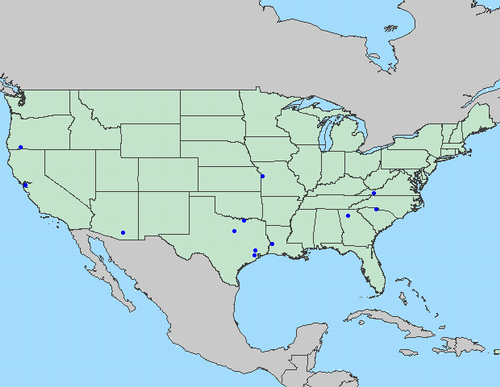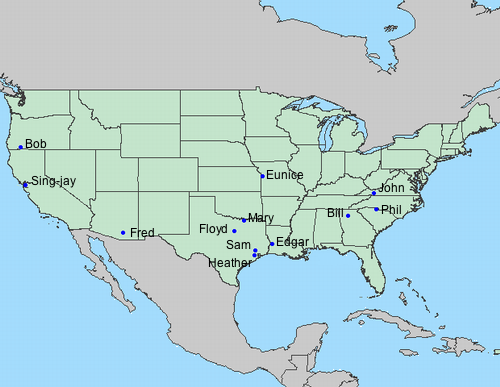A rather remarkable thing happened yesterday. I decided that it would be a useful and interesting tool for one of my clients to be able to see the location of the customers for their online store on a map. So I took the customer database, the excellent open source MapServer system, and some simple PHP code, and produced this map:

Then, on a lark, I decided to see what the map would look like if I added customer’s first names. And the revised map looked like this (actual customer names changed):

I was caught by surprise: the map suddenly went from being purely statistical to being personal. Bob from Oregon is our customer is a much more powerful piece of information to glean from a map than There is one customer from Oregon.
And I don’t mean to suggest that this is powerful because it allows us to do all sorts of Zellers-like “men between the ages of 24 and 34 who drive Datsuns are more likely to buy power mowers after 7:00 p.m.” kinds of divination.
I mean to suggest that this is powerful because it forces us to see our customers as real people.
Which might sound absurd.
But so much of the web is becoming all about volume. And clickthrus. And CPM. The funds from the people who click right thru this weblog and on to Google-provided ads more than pays for the cost of maintaining the webserver; but to maximize the revenue from those clickers requires treating them as nameless, faceless dupes (“you thought you were coming here for cowboy sex advice — ha! — click on, man!”)
When customers have real names, they suddenly pop into view. And become people. And we’re far more likely to create websites that are, well, people-friendly.
I think that’s a good business model.
 I am
I am
Comments
You checked with the
You checked with the customers -right? That it’s okay to use their personal information this way? Don’t know about the US, but Canada has very strict laws about this.
Even for first names? A first
Even for first names? A first name is not like a social security number.
It can be like one if it adds
It can be like one if it adds a critical piece of information to the matrix of otherwise available personal informaiton.
Please note that I am not
Please note that I am not (nor am I advocating) making “customer maps” public. Nor do the names on the map I posted bear any relation to real customers.
Add new comment